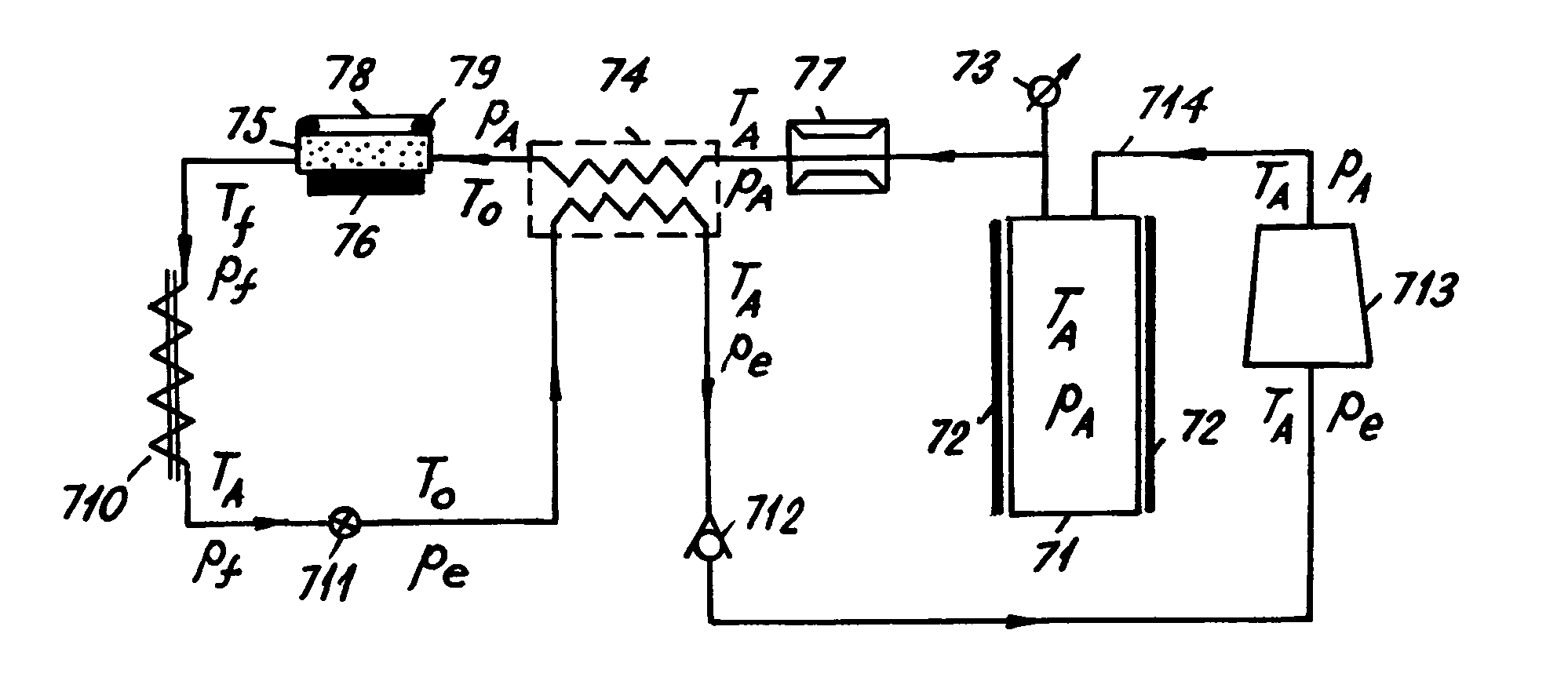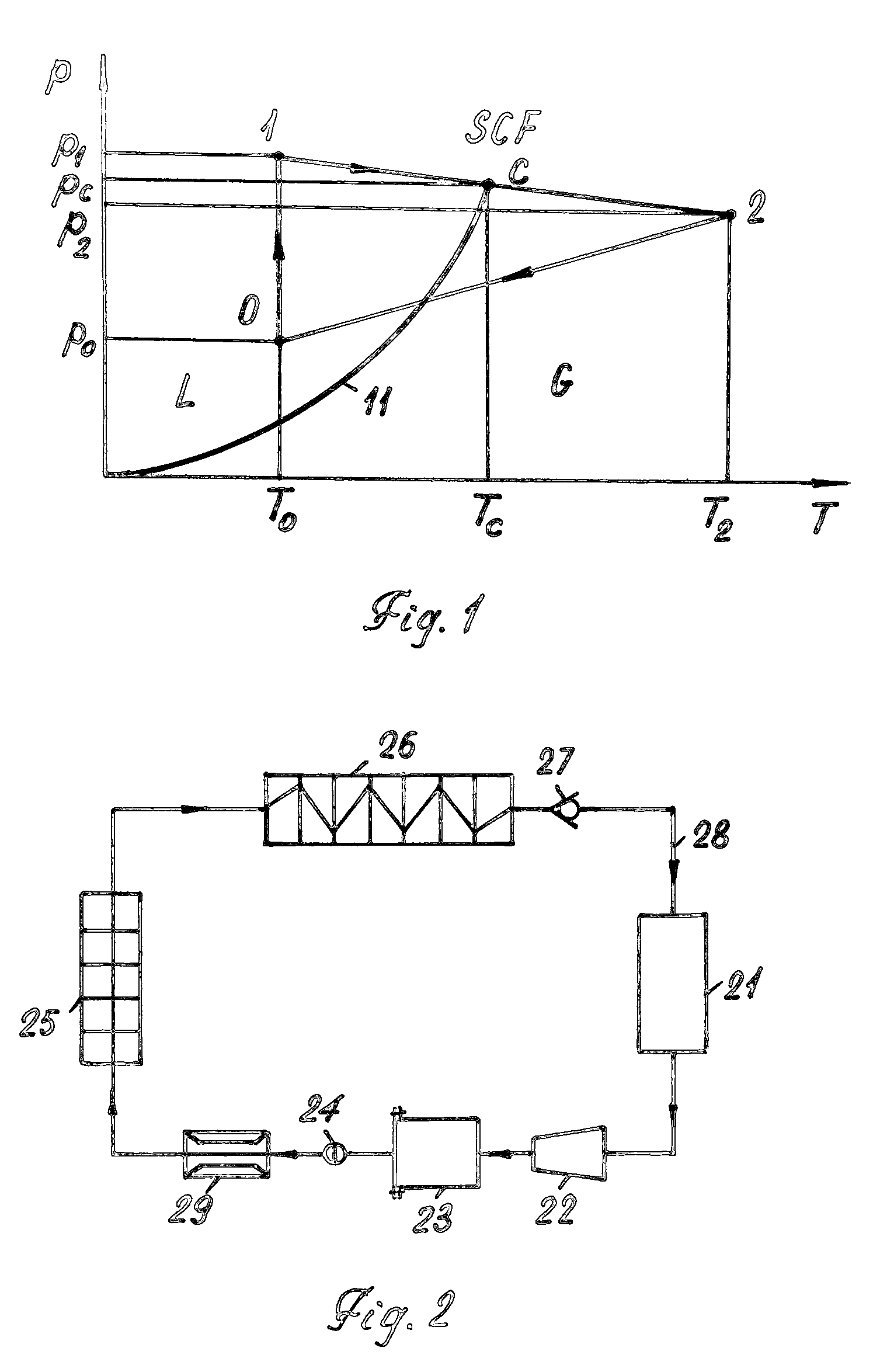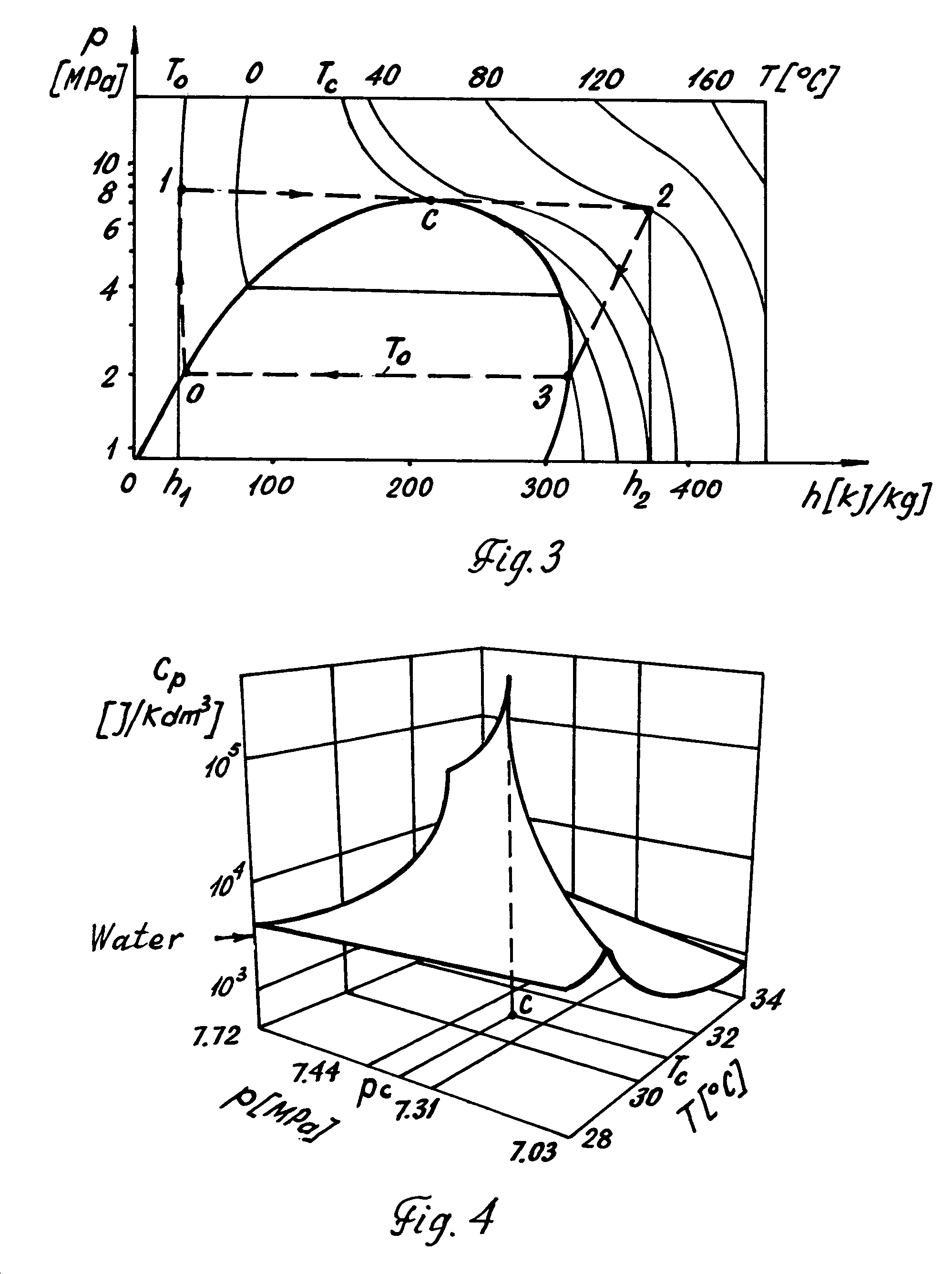Cooling methods and systems using supercritical fluids
a supercritical fluid and cooling method technology, applied in the field of supercritical fluid cooling methods and systems, can solve the problem of physically impossible “vapor lock” and achieve the effect of reliable, rapid and reliable heat absorption and dissipation, and maximum efficiency
- Summary
- Abstract
- Description
- Claims
- Application Information
AI Technical Summary
Benefits of technology
Problems solved by technology
Method used
Image
Examples
second embodiment
[0049]a new cooling system using carbon dioxide in a SCF state is shown in FIG. 7 and FIG. 8. The latter is a schematic phase diagram of carbon dioxide where L-G-SCF phases coexist. FIG. 7 and FIG. 8 describe an internal cooling mechanism that enables a wide temperature management range from −30° C. to ˜100° C. or even wider.
[0050]FIG. 7 shows liquid carbon dioxide enclosed in a standard reservoir 71, having a commercial heater 72, that maintains temperature TA of the reservoir slightly above the critical temperature Tc of carbon dioxide corresponding to the pressure pA above the critical pressure pc inside the range of 7.6-8.3 MPa. These temperature-pressure conditions correspond to the SCF state of carbon dioxide shown in FIG. 8. The necessary pressure pA inside the reservoir is maintained by monitoring an electric pressure gauge 73.
[0051]The SCF flowing from the reservoir is cooled first by a counterflow heat exchanger 74, to reach the temperature T0, and a temperature decrease f...
third embodiment
[0054]the present invention is shown in FIG. 9 and FIG. 10 having the same notations as in FIG. 7 and FIG. 8. This cooling system is based on an open cooling cycle when produced exhaust gas is simply discharged to the atmosphere at point 101 shown in FIG. 10.
CONCLUSION, RAMIFICATIONS, AND SCOPE
[0055]Presented cooling methods and systems using supercritical fluids may be effectively employed for numerous engineering applications in which it is necessary to provide effective and reliable cooling of critical objects with high heat emissions. Heat transfer from critical objects depends primarily on the thermodynamic properties of the refrigerants as well as on the flow rate and surface area of the object to be cooled. Microchannel cooling has distinct advantages due to a significant increase in surface area. Conventional two-phase microchannel cooling has some important deficiencies due to complex transient regimes of the liquid refrigerant related to bubble nucleation, “vapor lock”, an...
PUM
| Property | Measurement | Unit |
|---|---|---|
| diameter | aaaaa | aaaaa |
| temperature | aaaaa | aaaaa |
| temperature | aaaaa | aaaaa |
Abstract
Description
Claims
Application Information
 Login to View More
Login to View More - R&D
- Intellectual Property
- Life Sciences
- Materials
- Tech Scout
- Unparalleled Data Quality
- Higher Quality Content
- 60% Fewer Hallucinations
Browse by: Latest US Patents, China's latest patents, Technical Efficacy Thesaurus, Application Domain, Technology Topic, Popular Technical Reports.
© 2025 PatSnap. All rights reserved.Legal|Privacy policy|Modern Slavery Act Transparency Statement|Sitemap|About US| Contact US: help@patsnap.com



